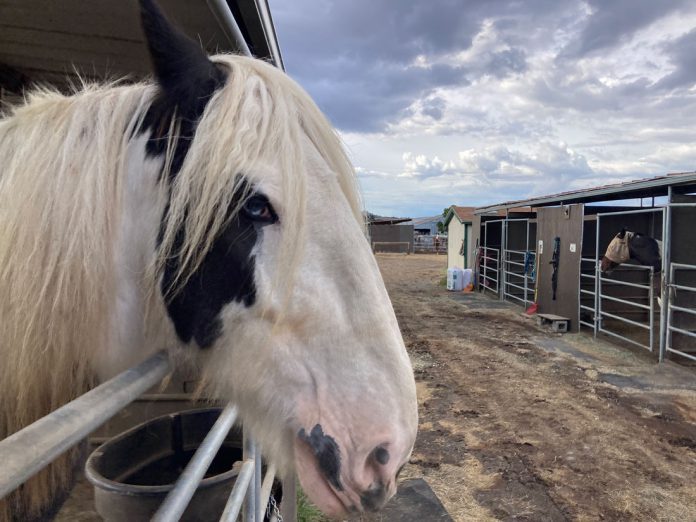
Santa Clara County planning officials have walked back controversial proposed land use policy changes that would have reclassified animals as non-livestock, following fierce opposition from equestrians, ranchers and agricultural advocates who warned the amendments could devastate rural businesses and displace thousands of horses and other farm animals.
At a public meeting held at the Horseman’s Association Nov. 6, Planning Director Jacqueline Onciano acknowledged what she called “a bit of a misstep” in the county’s rural zoning update process and announced officials would separate equestrian regulations from broader rural zoning amendments to allow more time for community input.
“There was very clear language in the draft ordinance that says horses are not livestock,” Onciano told the packed meeting. “We’re resetting.”
Horsekeeping advocates warned that without agricultural status that accompanies livestock classification, existing stables could lose tax exemptions and face expensive new compliance requirements, resulting in the displacement of thousands of horses from the county. An online petition opposing the changes gathered almost 3,000 signatures following the release of the draft amendments.
The amendments seek to address deeper problems with the county’s existing equestrian regulations, which Principal Planner Joanna Wilk acknowledged are confusing and outdated.
“There’s this circular confusion that our ordinance creates, because we say, ‘Oh, it’s a domestic animal, oh, wait, no, it’s livestock,’” Wilk said during a Nov. 10 public outreach meeting. “So it’s very unclear there.”
Under existing rules, keeping someone else’s horse on your property triggers requirements for a commercial stable use permit, a particularly expensive and difficult-to-obtain permit that is impractical for most small-scale horsekeepers to obtain. Wilk said this has led to widespread violations, with many facilities operating without a use permit.
“We’ve seen a lot of unpermitted horsekeeping facilities in the county because they’re not interested in spending all of that time, money and effort in just doing a small horsekeeping operation,” Wilk said. “And additionally, we’ve learned that not all horsekeeping is the same.”
To address these issues, planning staff presented a draft framework for new equestrian regulations separate from the rural zoning updates. The proposal would create a three-tiered system based on the scale of operations. This framework is subject to change following integration of community feedback resulting from recent public outreach meetings conducted Nov. 8 and 10.
Small-scale operations keeping up to four horses per acre, up to a maximum of 50 horses, would require no planning permits. These facilities could offer up to two private lessons daily without additional approvals, defined as one student, one horse and one instructor.
Medium-scale operations exceeding those thresholds would need a special permit that costs about $2,500 and takes three to six months to process through the zoning administrator.
Large-scale facilities offering group lessons, riding academies or competitions would require a use permit, which start at about $14,000 and take six months to a year for approval through the Planning Commission.
“If you’re doing group lessons, competitions, academies, this may have more of an impact on the neighborhood and it may be more appropriate to have a use permit review to operate that type of large-scale horse facility,” Wilk said. “If members of the public are coming to your property frequently, we were thinking that a use permit would be appropriate since there would be a lot of health and safety requirements that get triggered.”
Wilk emphasized the framework remains in draft form and officials welcome community feedback on details like the 50-horse cap and acre-per-horse ratios.
“We’d love to see people put their planning hats on and propose alternatives,” Wilk said.
Victoria Lam, senior policy aide for Supervisor Sylvia Arenas, whose district includes most of the county’s agricultural land, stressed that the amendments remain in draft form, saying, “This will not get finalized without your input and the Board of Supervisors.”
The county plans another round of outreach in early 2026 before bringing refined proposals to the Planning Commission and Board of Supervisors. Officials said they’re looking at roughly a year-long timeline to develop new equestrian regulations, currently targeting December for a presentation to the San Martin Planning Advisory Committee before moving through additional committees and ultimately to the Board of Supervisors for adoption.
The county has created a separate webpage for horsekeeping amendments where residents can submit comments and join an interested parties list. To stay informed, visit https://tinyurl.com/kdpeuye6.















The Department of Agriculture has already designated horses as livestock. Livestock falls under agriculture. Horses aren’t just for recreation, and every horse doesn’t have a purpose, meaning some are retired. So, are just supposed to euthanize them to make room for another?
The problem with the ordinance is that the board confused “equine” with “equestrian.” The only thing these two terms have in common is a horse.
When you write a zoning ordinance around a human sport, you get to play around with rules. When you write one around “livestock,” you don’t. Those laws and designated statuses have been defined by the federal government.
If the county wants to write a zoning ordinance around equestrians, good luck. That term encompasses some very powerful groups. If it wants to write a zoning ordinance around equine, it had better be air tight. Because one court challenge could land it at the federal level and completely unravel everything.